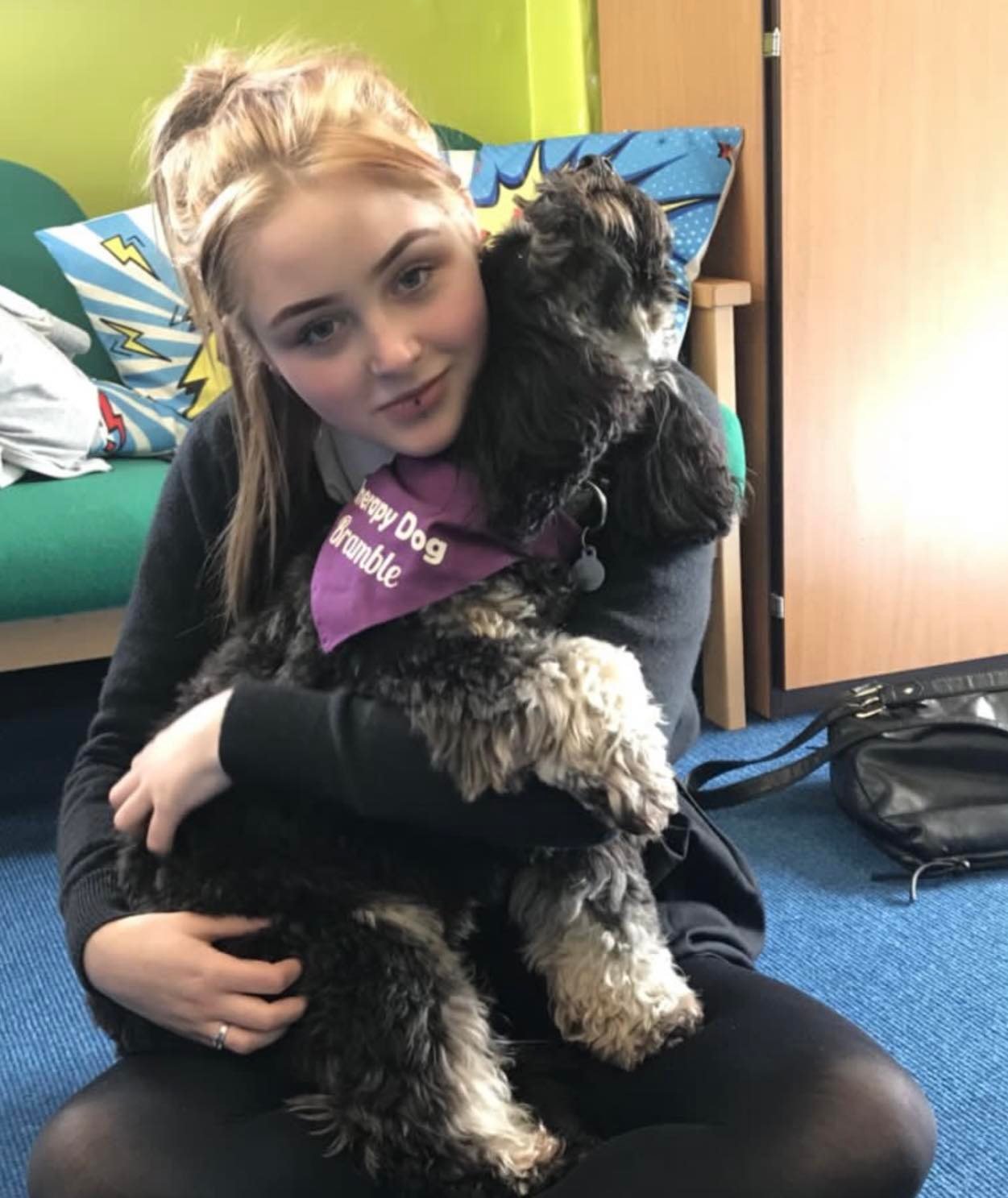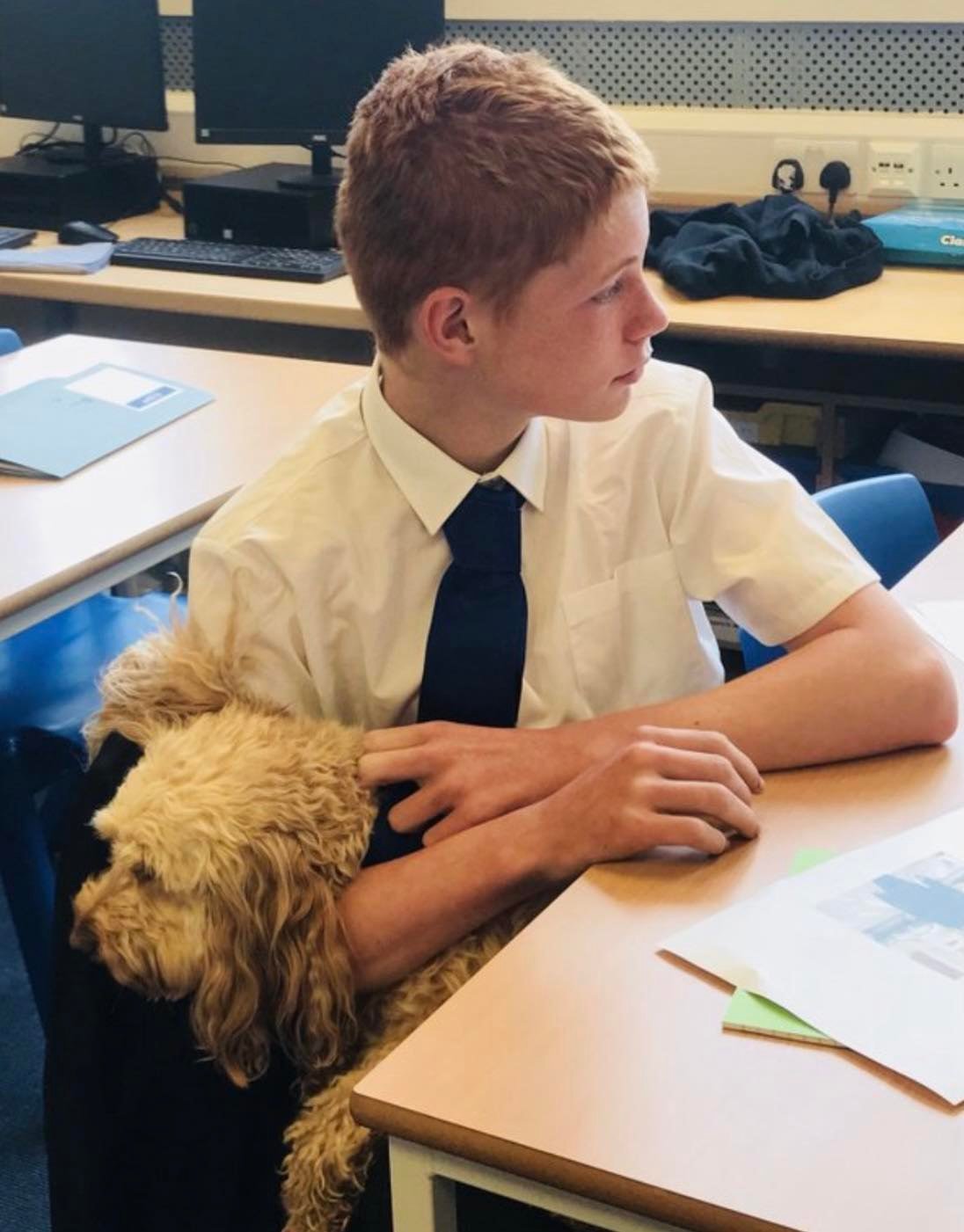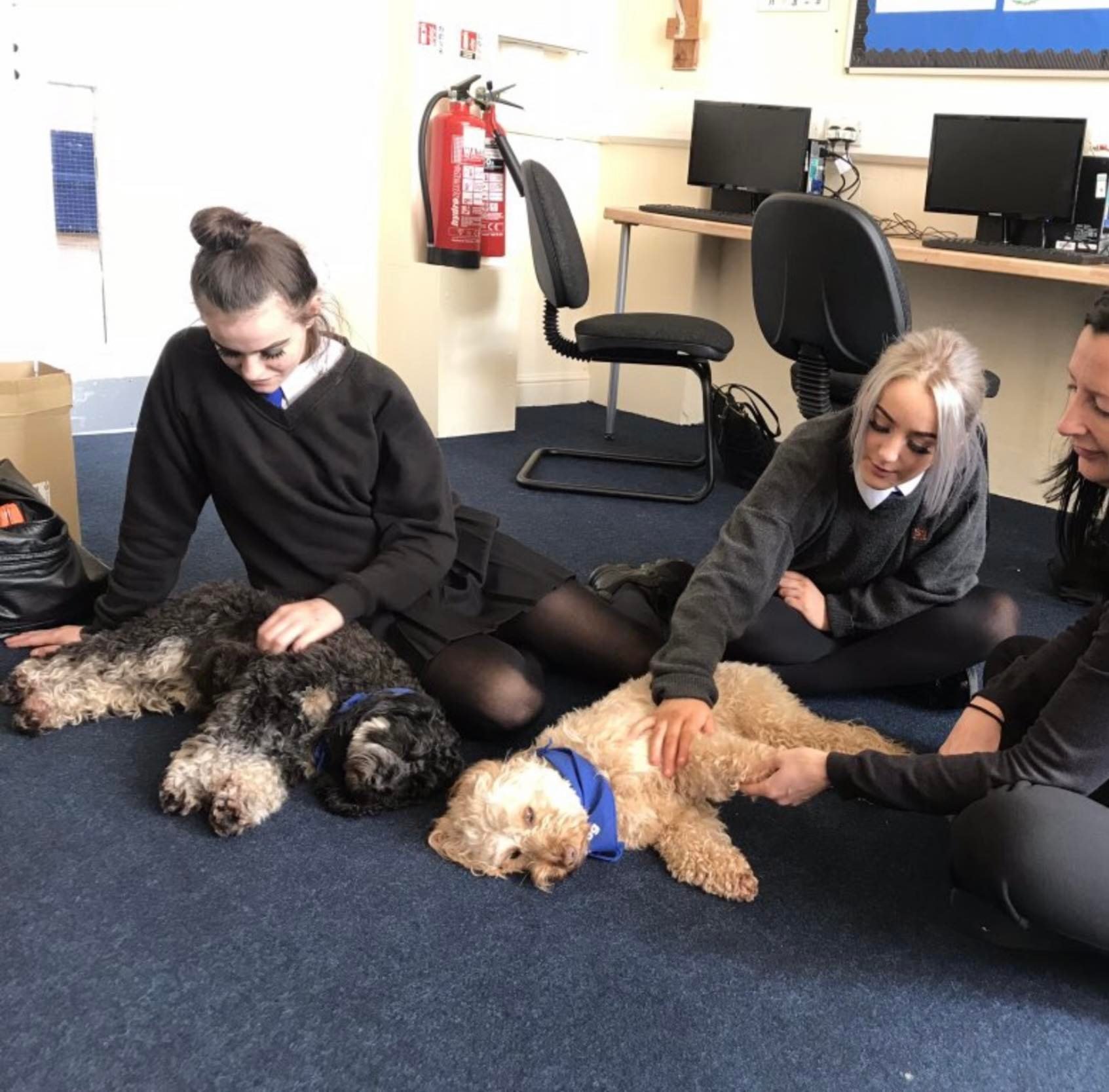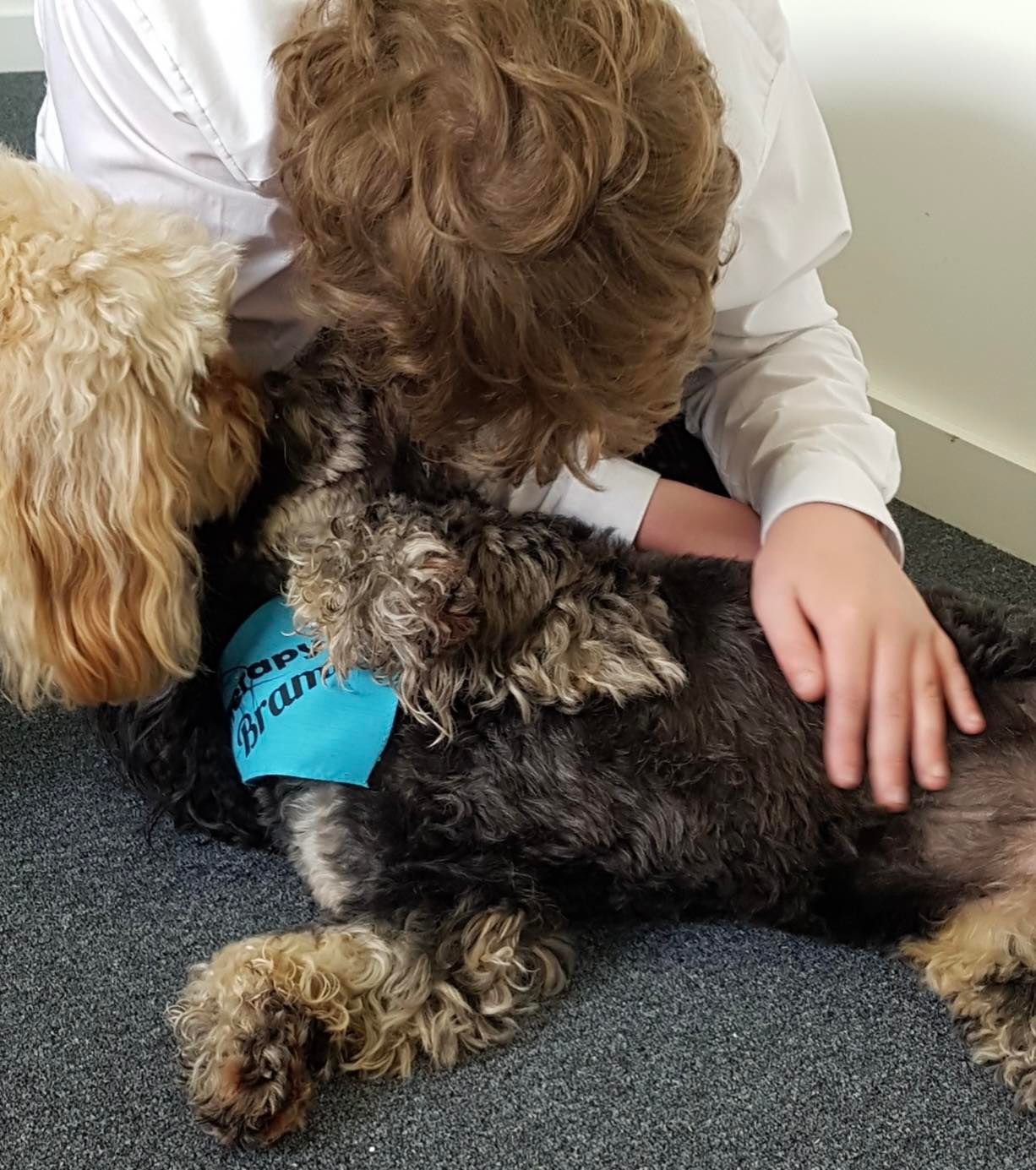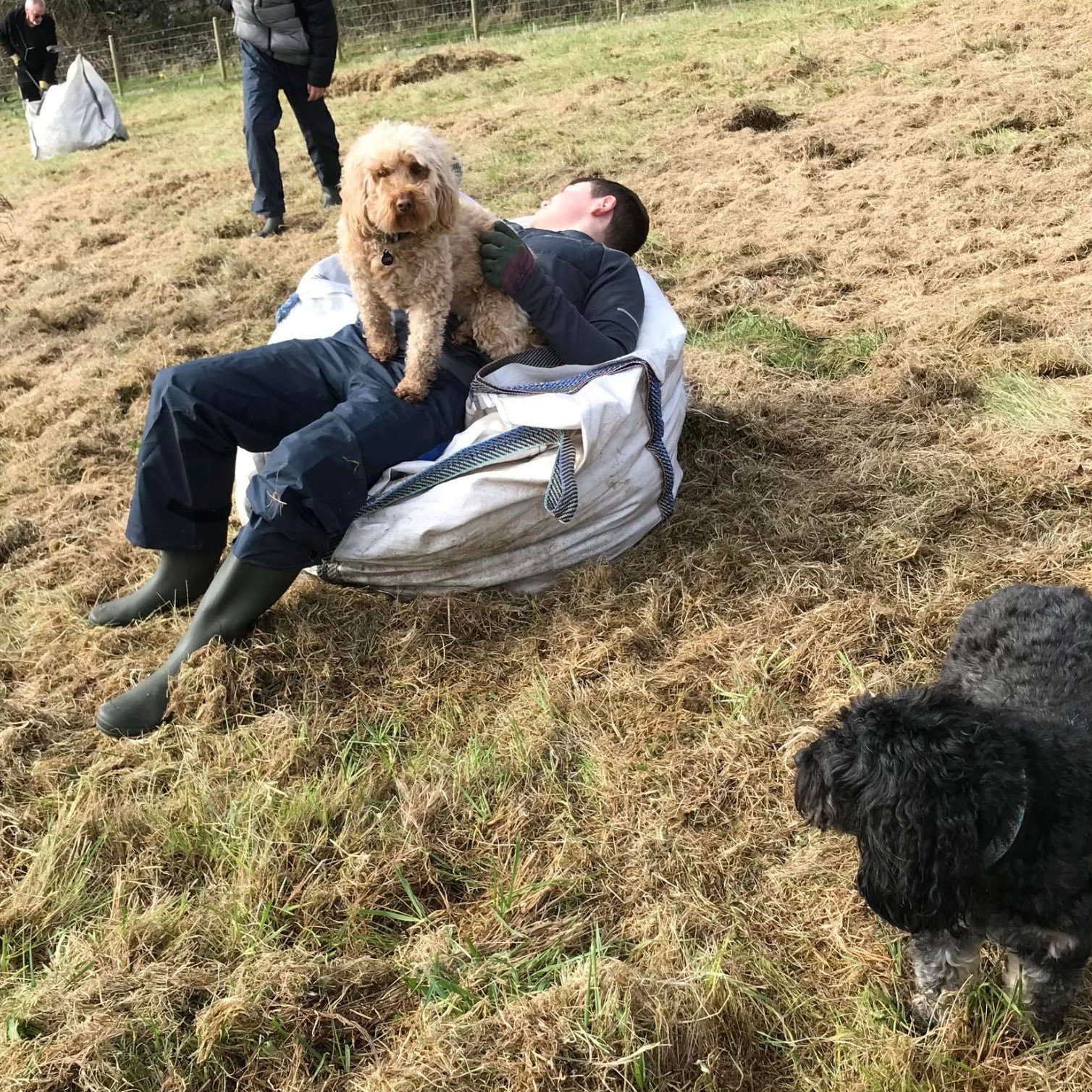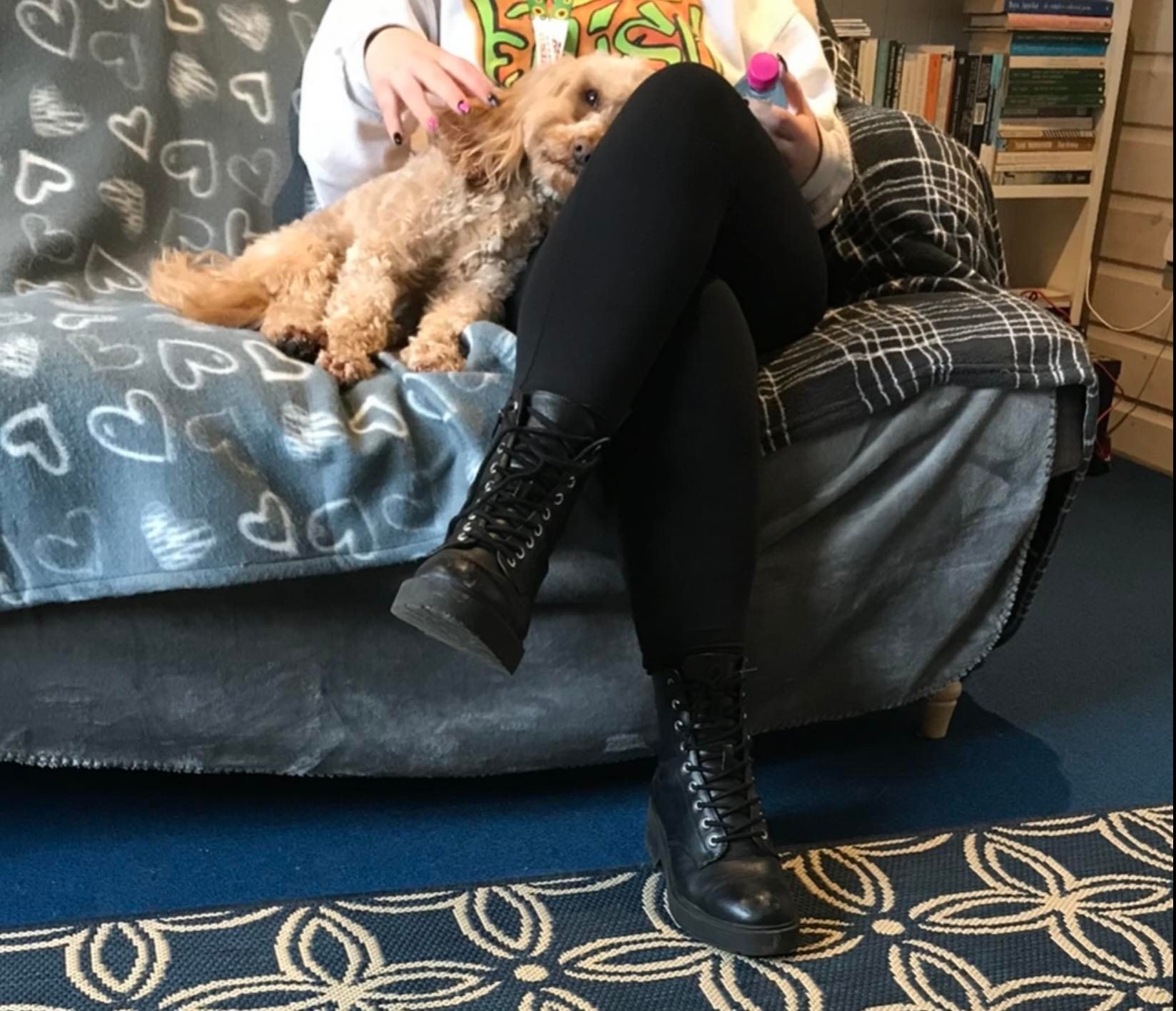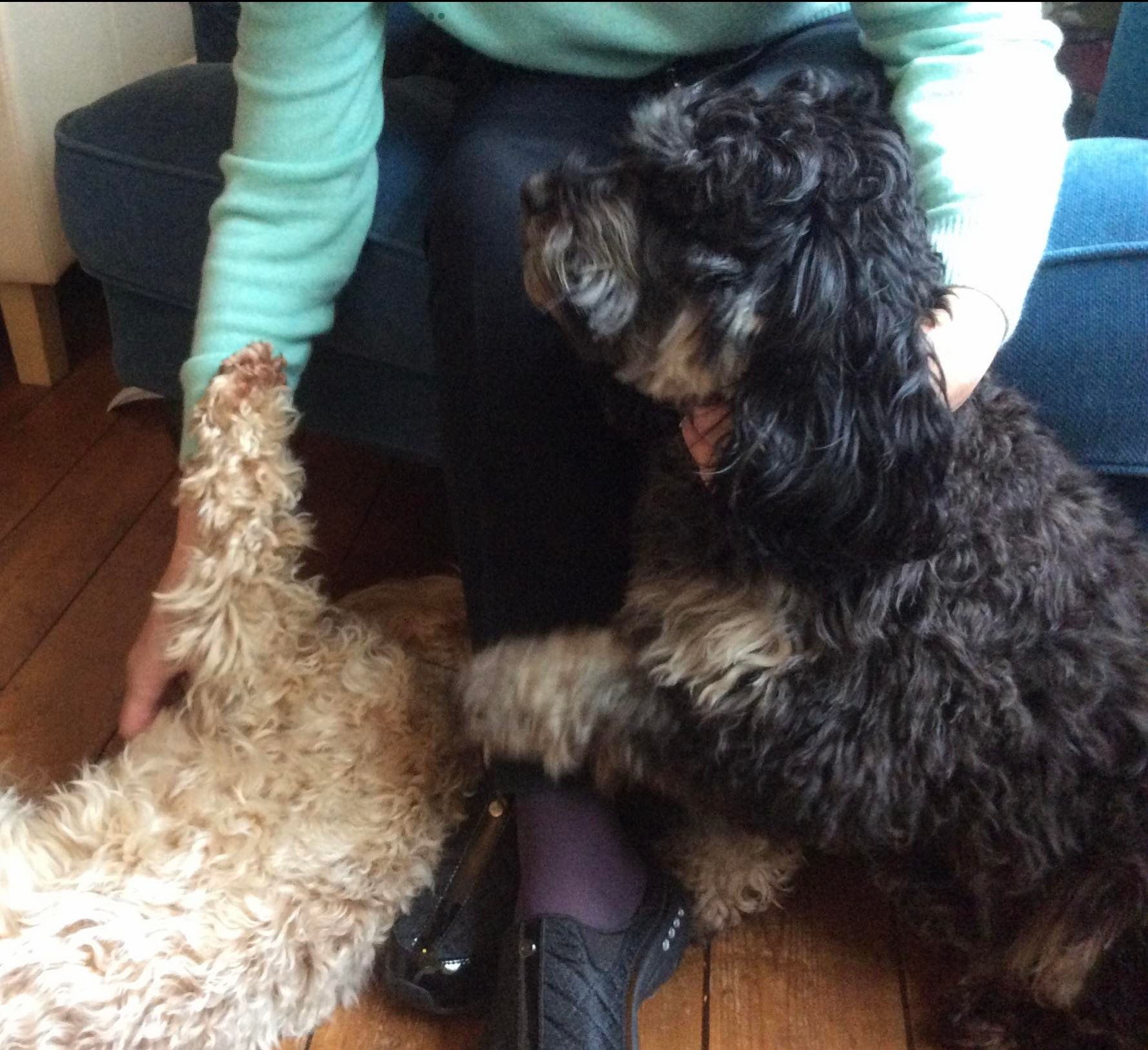Where Animal Assisted Therapy and Eco Therapy Meet
I am a Person Centred counsellor of thirtytoomany years, and I have been supervising and training counsellors for at least the last twenty of that. I have had the privilege of working in many different organisations and settings alongside private practice and the joy and challenges of ten years work developing and pioneering ‘Working with Families in The Person Centred Approach’. Here I collaborated with a young person’s drug and alcohol service where I worked with over 200 families and was subsequently commissioned to write up the underpinning theory and develop a training course to train PC therapists in this family work. This gave me the confidence to step out under my own umbrella to pioneer developing Animal Assisted Therapy (AAT) specifically in therapeutic counselling. Therefore, seven years ago I trained as an AAT practitioner along with getting me two eight week old cockapoo puppies which I spent the next three years training into their role as therapy dogs and myself into an AAT therapist and practitioner.
Just like the term ‘counselling’, which is a very broad term for a myriad of roles, so the term ‘Therapy dog’ also covers a wide range of helping activities.
There is a physiological and psychological process that happens in our brains when we are close to or pet an animal. So, from the well trained and widely socialised therapy dog, who with a handler makes visits into hospitals, schools and colleges or to disaster sites and to victims of crime and violence to the differently trained service dog that can smell specific illness or alert the onset of a seizure in their owner.
Bramble and Laurel are Therapy dogs in its truest sense as they are specifically trained to tune into and respond in therapeutic ways to the specific issues of trauma, depression and anxiety. They communicate to me throughout counselling sessions and respond empathically to client needs as the talking therapy hour unfolds.
They of course show affection and interest to interact with clients who are not traumatised or anxious, but demonstrate specific behaviours towards clients who are. This is both supportive and facilitative to the client in the counselling process. We three are so closely bonded, and have a continual communication where they follow my cues and I follow theirs, which they communicate to me through their body language.
The nearest comparison I could make would be with equine therapy where you have a horse and handler, therapist and client. The handler’s role is to look after the welfare of the animal, to look out for signs of tiredness or stress and to be alert to anything that could be of danger to them to ensure the animal’s safety.
The therapist role is to ‘hold’ the client in the therapeutic process, much like in play therapy or expressive therapy except here the medium, rather than being inanimate is a live being who is responsive and focussed upon the client. The greatest difference in our situation is that I am both therapist and handler. I have had to plough my own furrow to pioneer this work as I have been unable to find any full training here in the UK. I have stalked therapists in America where this work is much further ahead than here, spent hours in clinical supervision reflecting on the work in the counselling room. I have worked with dog trainers and behaviourists and given hours to writing up the theory which is firmly embedded in the Person Centred Approach.
By the time Bramble and Laurel were six months old I had begun to socialise them into my counselling room with the generosity of my Supervisees. By the time they were one year old, I had begun to socialise them into a school situation and at the age of three we had honed our practice in both settings. I gradually introduced them to clients and they took to this like little ducks to water. I began to learn about and to read their body language and responses, and they learned to follow my cues. Gradually it emerged that they each responded to different and very specific needs and were each rewarded for this which encouraged them to do more. For a year or two clients were able to choose whether the dogs were part of their sessions or not. Nowadays, it’s taken as read that we come as a unit of three.
The schools we worked in were all special provision schools which cater for the needs of children who cannot manage in mainstream school for a wide range of medical or emotional reasons. Each week we would do a tour and visit two or three groups in the classroom, and these two would know what they needed to do, who needed specific interaction and of what kind. Their responses alerted me to need and I have spent many an hour on a classroom floor listening to children as they are held and helped by Bramble and Laurel.
At The Orchard, the work has taken on whole new dimensions, each dimension is in its own right profound, however the sum of all the different elements has impact far beyond anything I could’ve imagined and continues to show me ever new therapeutic ways of being week on week.
Being outside works on two levels.
1. Nature itself works its own magic in displaying things of wonder and fascination, which captures interest and invites curiosity. The trees and birds, all the sights and sounds seem calming and soothing in themselves.
2. Interacting with clients and groups in the open rather than the confines of a counselling room or classroom seems in itself to help in opening up and dropping barriers which allows conversations, and sharing seems to happen quite spontaneously. Moving around and engaging in activities creates an easier dynamic for worries and troubles to just emerge into conversation, for emotions to happen in the moment and in real time which seems more natural and part of everyday life.
Working outdoors with groups demands that firm boundaries are in place, for participants’ safety and to protect the wildlife; while at the same time there is a special kind of freedom in our big open space. As we work as a group over weeks and months, so ways of being and relating to each other become evident and bigger themes can be worked with as we talk about and explore events as they happen. This develops self-awareness, that words and actions always have an impact that can be helpful or hurtful. This allows ownership of behaviour. Through this young people learn about empathy and the art of seeing the world from another’s frame of reference. There are struggles and breakthroughs, but this is surely preparation for getting along in life.
Bramble and Laurel too seem freer to engage as they have space to move, to approach, to cuddle up too, and to move away from when appropriate. They have their place as full members of the group and their communications are noticed, welcomed and play a part in our explorations. This is the stuff which leads to a wider and deeper range of communication to me, to a young person and within the group. While there is an ongoing group process, there is also time for one-to-one space, as we work side by side weeding or planting or as we move from one part of the site to another. I have been continually delighted by ten minute one to one conversations which have been therapeutically helpful to an individual participant. I also observe how Bramble and Laurel facilitate their own mini sessions as they cuddle up to or interact with participants in a way which seems helpful.
Of course, I still have a counselling room which is used on a day-to-day basis. However, this is situated looking out over The Oak Garden where the huge old oaks make a protective boundary. From here we can see the seasons change and the hens foraging in their run and we often get to watch the buzzards circling above us.



